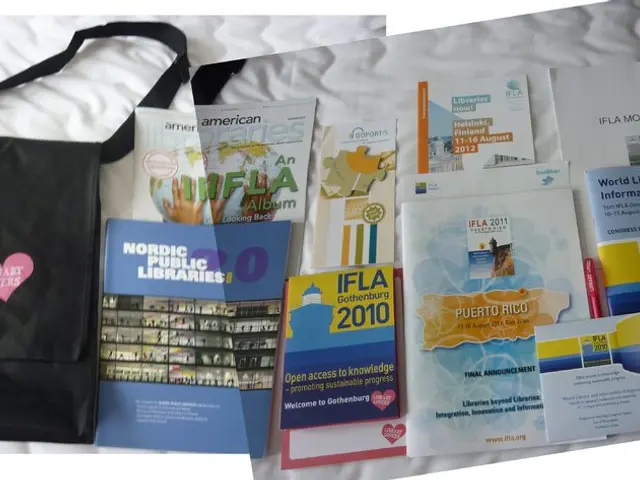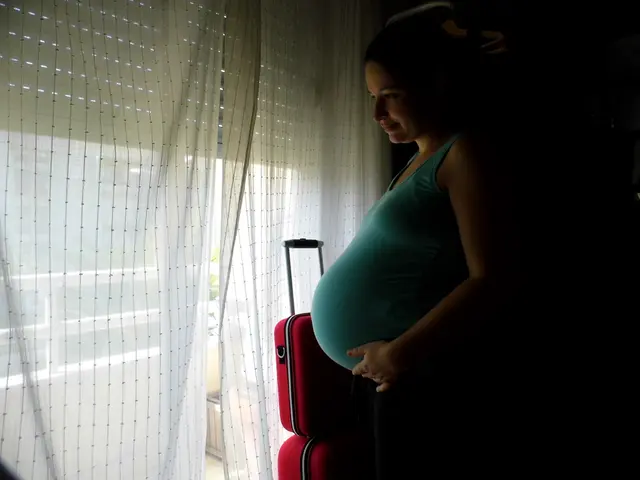The skilled female population will address the demographic concern
Russian National Project "Family" Focuses on Nurturing Large Families
In an effort to combat the nation's declining population, the Russian government has unveiled the "Family" national project, a five-year plan involving substantial financial support to families. The ambitious project, which will see a total investment of 17.9 trillion rubles, features diverse measures aimed at increasing the number of large families and improving the overall well-being of families with children.
Financial benefits form a significant portion of the project, with regional support measures planned for more than 200,000 families, particularly those residing in areas with below-average birth rates. Subsidies will cover nearly 6.3% of low-income families under social contract agreements, aiming to assist almost 1.5 million families by 2030. Moreover, mortgage repayment subsidies will be granted to over 1.4 million large families, as per the project's plans.
Annual indexing of the maternity capital—a demographically influential measure—will be implemented according to the inflation rate, begun in 2025. The maternity capital program, as well as preferential mortgage schemes and payments of 450,000 rubles for the birth of a third child, have been extended until 2030.
To further support working families, a family allowance will be provided to 4.2 million families with two or more children by 2030, while 10 million children are expected to receive annual allowances over the next five years, in an attempt to combat poverty within these families. An additional measure to boost fertility is increasing the childcare allowance for student and postgraduate mothers up to the regional minimum wage.
Non-financial aspects of the project include the establishment of points for renting essential items for newborns in thirty-three regions. In thirty-one federal subjects, comprehensive family preparation services for childbirth will be set up in women's consultations, and free IVF preparations—involving necessary genetic and hormonal tests and additional examinations—will be provided in twenty-nine regions.
Though the natural population growth is a pressing concern for the government, current estimates suggest that Russia's population could drop from 146 million to 137 million by 2050, as per United Nations estimates. With the total fertility rate expected to decline from 1.76 in 2015 to 1.33 in 2025, the need for effective measures to increase fertility rates not only becomes apparent but urgent.
Analysts and demographers agree that targeting women over thirty is an essential approach to increasing birth rates. Implementing financial incentives, such as increasing payments to families for the birth of a third child or subsequent children and increasing monthly allowances for all pregnant women, can potentially help achieve the ambitious goal of raising the total fertility rate to 1.593. However, skepticism surrounds the achievability of this objective, with experts expressing that a more realistic solution may lie in the introduction of maternity capital for the second and third child.
Though numerous measures are aimed at increasing birth rates, empirical evidence to assess their effectiveness remains limited. Non-financial support measures such as rental points for newborn essentials are intended to alleviate practical difficulties faced by young parents and encourage them to consider having more children. However, as of now, financial incentives and housing subsidies appear to dominate the government's focus in attempting to increase the number of large families.
- The Russian government's focus on large families extends beyond financial assistance, touching on various aspects of health and wellness, including fitness and exercise, mental health, and skin care.
- Workplace-wellness programs could be introduced to promote a healthier workforce, thereby increasing productivity and bolstering the economy.
- Therapies and treatments for addressing mental health issues should be accessible to families, helping them cope with stress and foster a positive family dynamic.
- A strong emphasis on women's health is crucial, especially during menopause, a stage often accompanied by physical and emotional changes.
- Medicaid and Medicare policies should emphasize preventive care for women during this stage, ensuring they maintain optimal health.
- The environmental impact of the expanding family population necessitates the integration of environmental science into family planning strategies.
- Encouraging sustainable living through financial incentives, such as tax breaks and subsidies for energy-efficient solutions, can lead to a greener environment and better health for all.
- Financial management plays a significant role in this endeavor, with personal finance and wealth management guides tailored to large families aiding in long-term financial stability.
- Space and astronomy offer fascinating opportunities for learning, inspiring the curiosity and creativity of children, which can contribute to their overall development and happiness.
- Interior design can create welcoming, functional living spaces that facilitate family bonding and improve the quality of life.
- Cooking and baking can serve as fun activities for families to enjoy together, promoting lifelong healthy eating habits and nurturing relationships.
- Embracing a holistic lifestyle that encompasses healthy cooking, physical activity, mental wellness, and environmental consciousness can foster a healthier family.
- Outdoor living and adventure travel offer families the chance to connect with nature, promoting family bonding and instilling a sense of appreciation for the environment.
- Fashion and beauty choices can also contribute to self-esteem and mental wellness, with eco-friendly and sustainable options making a positive environmental impact.
- Food and drink, particularly those containing nutrient-rich ingredients, are essential for maintaining good health and wellness.
- Dining experiences can be a cherished family tradition, offering an opportunity to enjoy delicious global cuisines and strengthen relationships.
- Understanding family dynamics is crucial in addressing challenges and fostering growth, with educational materials and self-development resources available to help families navigate their unique circumstances.
- Personal growth can be nurtured through ongoing learning and self-improvement, and families can support each other's goals and aspirations.
- Shopping for household items and necessities can be an opportunity for families to bond and make informed, sustainable choices.
- Regular car maintenance and the adoption of electric vehicles can lead to reductions in carbon emissions and contribute to a healthier planet.
- Social media platforms can be harnessed for sharing recipes, tips, and experiences related to family life, fostering a sense of community and support.
- Streaming movies, TV shows, and documentaries can promote family bonding and inspire conversations about important topics like climate change, mental health, and environmental consciousness.
- Reading product reviews and comparing deals and discounts can help families make informed decisions when purchasing goods, promoting sustainable consumption.
- Traveling as a family offers an opportunity to explore new cultures and broaden horizons, reinforcing the values of understanding, empathy, and open-mindedness.
- Sustainable living extends to car-maintenance practices, with eco-friendly alternatives helping to reduce carbon emissions and foster a healthier environment.
- Pets bring joy and companionship to families, offering emotional support and helping to instill values like empathy and responsibility in children.
- Digital technology can empower families to access information, connect with others, and engage in hobbies, such as gardening and data and cloud computing, fostering personal growth and family bonding.








